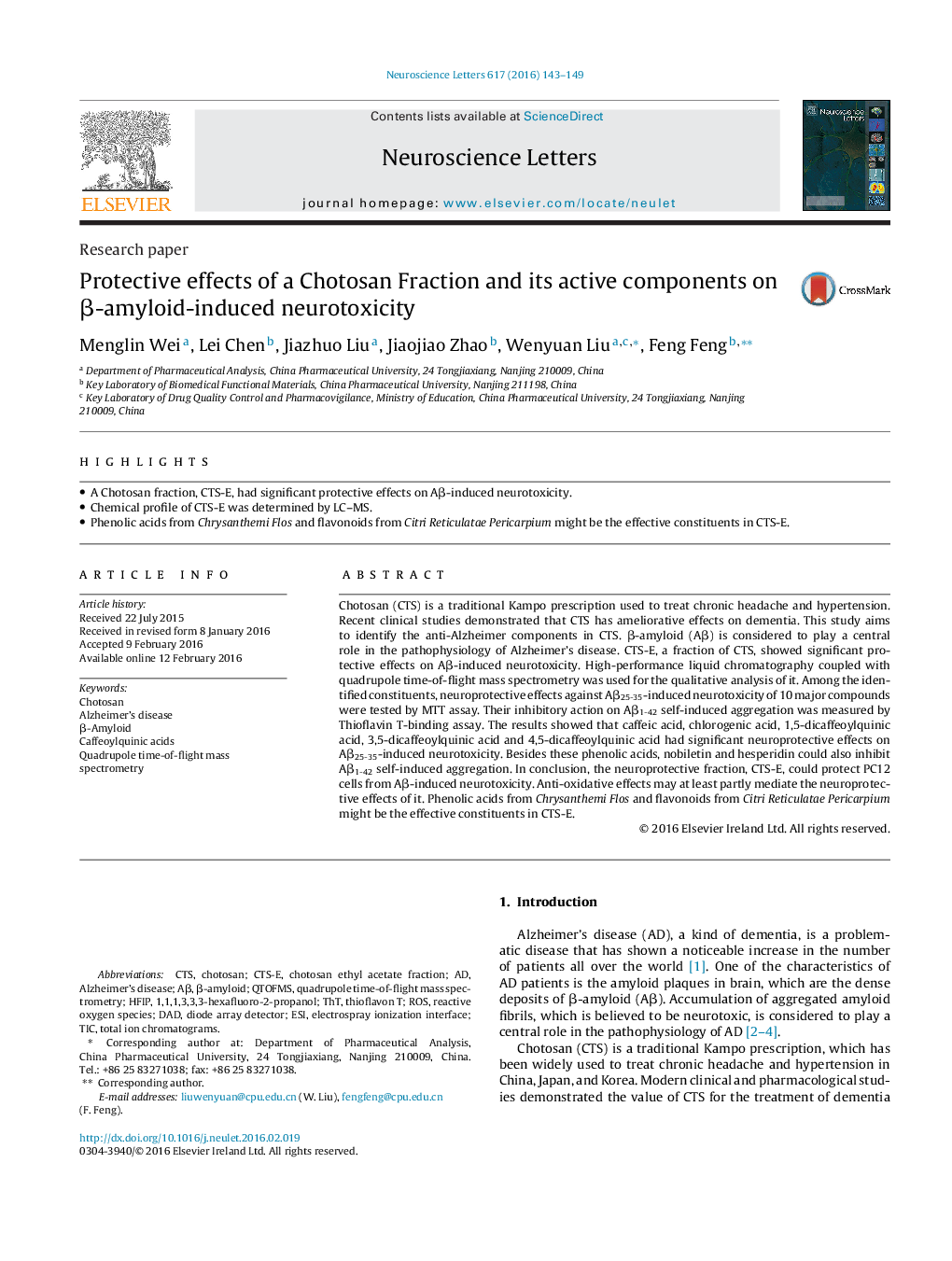| کد مقاله | کد نشریه | سال انتشار | مقاله انگلیسی | نسخه تمام متن |
|---|---|---|---|---|
| 6279940 | 1615082 | 2016 | 7 صفحه PDF | دانلود رایگان |

- A Chotosan fraction, CTS-E, had significant protective effects on Aβ-induced neurotoxicity.
- Chemical profile of CTS-E was determined by LC-MS.
- Phenolic acids from Chrysanthemi Flos and flavonoids from Citri Reticulatae Pericarpium might be the effective constituents in CTS-E.
Chotosan (CTS) is a traditional Kampo prescription used to treat chronic headache and hypertension. Recent clinical studies demonstrated that CTS has ameliorative effects on dementia. This study aims to identify the anti-Alzheimer components in CTS. β-amyloid (Aβ) is considered to play a central role in the pathophysiology of Alzheimer's disease. CTS-E, a fraction of CTS, showed significant protective effects on Aβ-induced neurotoxicity. High-performance liquid chromatography coupled with quadrupole time-of-flight mass spectrometry was used for the qualitative analysis of it. Among the identified constituents, neuroprotective effects against Aβ25-35-induced neurotoxicity of 10 major compounds were tested by MTT assay. Their inhibitory action on Aβ1-42 self-induced aggregation was measured by Thioflavin T-binding assay. The results showed that caffeic acid, chlorogenic acid, 1,5-dicaffeoylquinic acid, 3,5-dicaffeoylquinic acid and 4,5-dicaffeoylquinic acid had significant neuroprotective effects on Aβ25-35-induced neurotoxicity. Besides these phenolic acids, nobiletin and hesperidin could also inhibit Aβ1-42 self-induced aggregation. In conclusion, the neuroprotective fraction, CTS-E, could protect PC12 cells from Aβ-induced neurotoxicity. Anti-oxidative effects may at least partly mediate the neuroprotective effects of it. Phenolic acids from Chrysanthemi Flos and flavonoids from Citri Reticulatae Pericarpium might be the effective constituents in CTS-E.
Journal: Neuroscience Letters - Volume 617, 23 March 2016, Pages 143-149